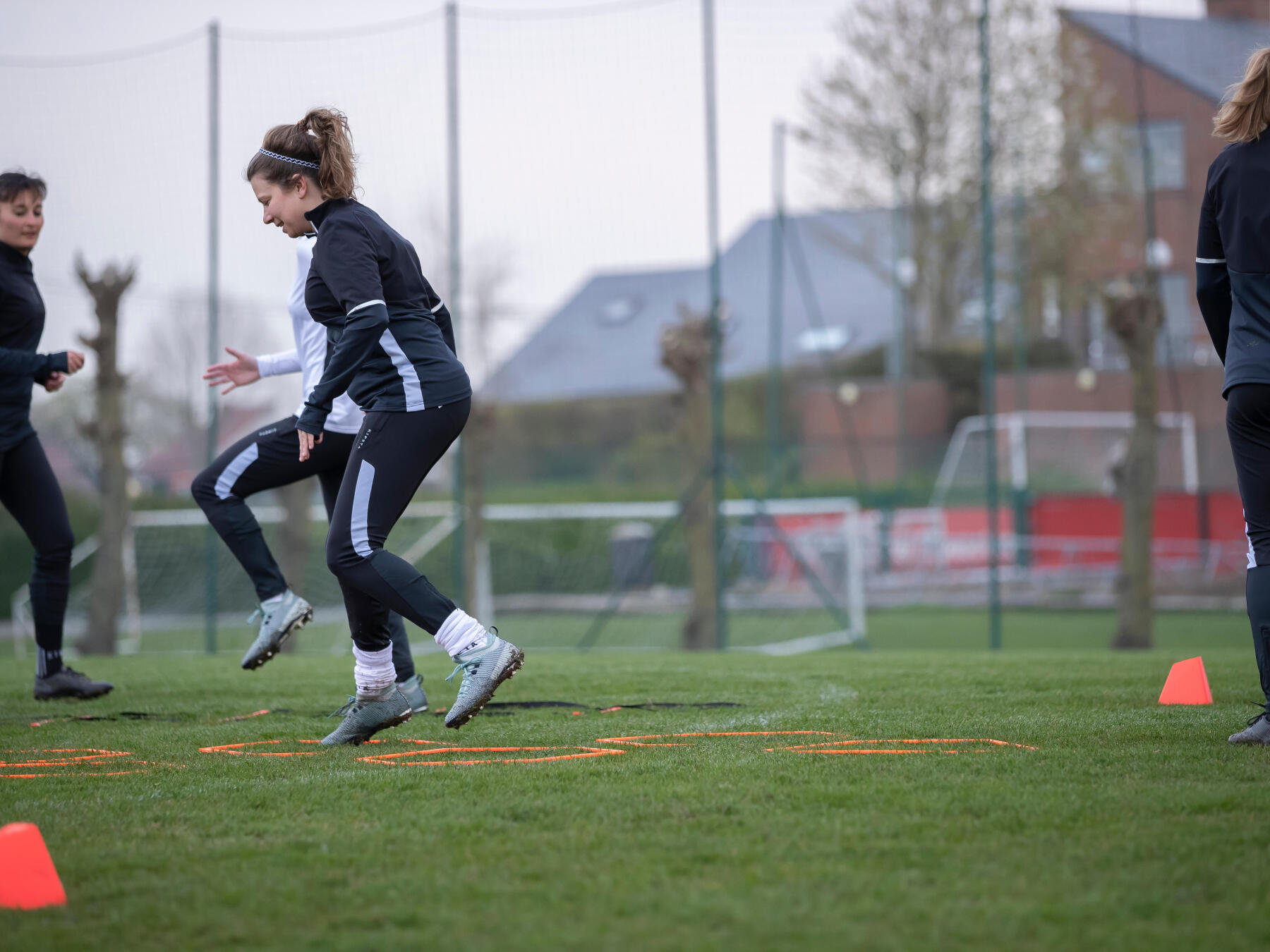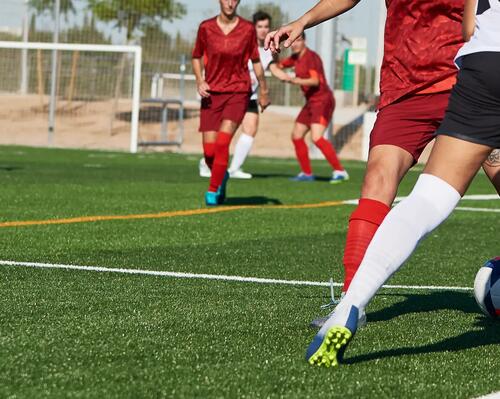Before warming up the adductors, move your legs in semi-circles, always moving from the inside to the outside, first to the right, then to the left. Do around 20 repetitions on each side. You could also move across the pitch by doing vertical jumps every 5 seconds, for example.
And finally, end the warm-up with ball exercises. You could do some ball handling exercises, ground passes and cross passes, etc.Then you'll be ready for your practice or match!
I emphasise the importance of warm-ups, because I know that we sometimes have a tendency to neglect them, particularly when young, but learning how to protect our bodies is important for all footballers. We play a contact sport with a lot of risks of injury, so it's best to avoid adding to these by neglecting your body. Sometimes all it takes is a sprint without a warm-up, or a kick that's too hard, to injure yourself, and often, when it's a muscle injury, it can take you out of the game for several weeks...





